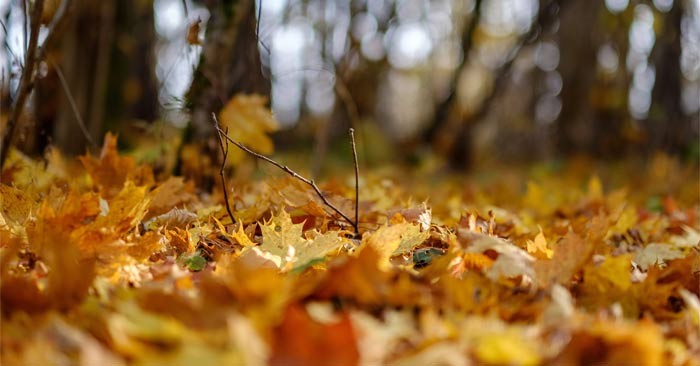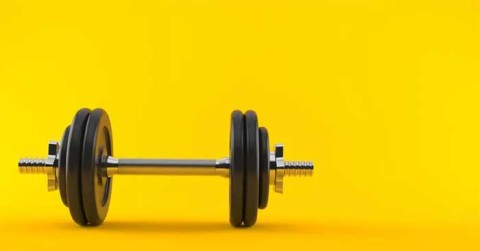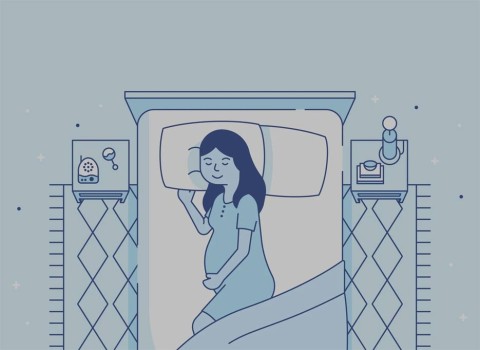How to regain access to hard drive, fix error of not being able to open hard drive

In this article, we will guide you how to regain access to your hard drive when it fails. Let's follow along!
The temperature is exactly the same, but it doesn't feel the same from season to season . Why is that? Let's find out why fall is colder than spring even though the temperature is the same !

Why is autumn colder than spring at the same temperature?
“ The same temperature can feel completely different depending on the season, and it all depends on factors like humidity, dew point, sun angle, and even wind direction ,” explains Cheryl Nelson, a meteorologist and disaster preparedness expert based in Roanoke, Virginia. Here’s why temperatures like 60 degrees or even 67 degrees can feel warmer in the spring than they do in the fall.
High humidity makes the body feel warmer
Spring and summer are typically wetter than fall. As Nelson explains, “ moist air from the Gulf of Mexico often carries extra moisture into the atmosphere .” That raises the humidity and dew point. “ The dew point tells us how much moisture the air can hold before it feels stuffy ,” she says, “ and when the humidity is high, sweat doesn’t evaporate as easily, making us feel warmer and more uncomfortable even at lower temperatures .”
The sun is higher in the sky
The sun is at a different angle in the spring than it is in the fall: Because of the Earth's tilt, the sun is higher overhead and at a sharper angle. Erica Lopez, a meteorologist in Jacksonville, Florida, who works on the weather app MyRadar, explains that a higher sun provides more direct sunlight than when the sun is lower. " At a higher angle, the sunlight is stronger and focused on a smaller area, making you feel warmer ."
In contrast, in October and November, “ the sun is lower and more reflective, reducing the amount of heat absorbed by the ground and air, ” Lopez says. This is why you might feel like wearing a hoodie on a 16-degree morning in November, but feel comfortable wearing a sundress at the same temperature in February.
Warm ground radiates more heat
Part of what you experience, weather-wise, has to do with the ground beneath you. Warmer ground in the spring radiates heat into the air, and that makes you feel a little warmer. “ Think of asphalt radiating heat into the atmosphere ,” Nelson says. In the fall, the ground cools, making the air feel colder.
You are used to the weather last season
Your body will adapt to the season you've just experienced, says Jonathan Erdman, senior digital meteorologist at Weather.com. If it's early fall and you're just coming out of hot summer temperatures or you've just experienced a warm spell, " 16 degrees in the middle of the afternoon might be enough to make you reach for a light jacket ," says Erdman. " On the other hand, the first 16 degrees of spring in the afternoon might be so exhilarating that you might celebrate by going outside without a jacket ."
Wind speed
Fall tends to be windier than spring and summer, making it a little colder. " Stronger winds blow heat away from our skin more quickly ," says Erdman. That's why we feel cold.
Other factors that affect the body's perception of heat
The altitude of the area you are in
The air is thinner at high altitudes, and "at the same temperature, thinner air can feel colder, especially if it's dry and the sun isn't as strong, like in the fall," Lopez explains.
Area near water
Whether you're near a small or large body of water, " large bodies of water can moderate temperatures because water absorbs and releases heat more slowly than land ," says Lopez. " Coastal areas tend to have more moderate temperatures, and in the spring and fall, places near water can be warmer than inland areas at the same temperature ."
Your age
Older adults have lower body temperatures and have more difficulty regulating their body temperature to its maximum. Therefore, there are differences in temperature perception between older adults and adolescents.
Here are the reasons why you feel colder or cooler even at the same temperature in fall and spring.
In this article, we will guide you how to regain access to your hard drive when it fails. Let's follow along!
Dental floss is a common tool for cleaning teeth, however, not everyone knows how to use it properly. Below are instructions on how to use dental floss to clean teeth effectively.
Building muscle takes time and the right training, but its something anyone can do. Heres how to build muscle, according to experts.
In addition to regular exercise and not smoking, diet is one of the best ways to protect your heart. Here are the best diets for heart health.
The third trimester is often the most difficult time to sleep during pregnancy. Here are some ways to treat insomnia in the third trimester.
There are many ways to lose weight without changing anything in your diet. Here are some scientifically proven automatic weight loss or calorie-burning methods that anyone can use.
Apple has introduced iOS 26 – a major update with a brand new frosted glass design, smarter experiences, and improvements to familiar apps.
Yoga can provide many health benefits, including better sleep. Because yoga can be relaxing and restorative, its a great way to beat insomnia after a busy day.
The flower of the other shore is a unique flower, carrying many unique meanings. So what is the flower of the other shore, is the flower of the other shore real, what is the meaning and legend of the flower of the other shore?
Craving for snacks but afraid of gaining weight? Dont worry, lets explore together many types of weight loss snacks that are high in fiber, low in calories without making you try to starve yourself.
Prioritizing a consistent sleep schedule and evening routine can help improve the quality of your sleep. Heres what you need to know to stop tossing and turning at night.
Adding a printer to Windows 10 is simple, although the process for wired devices will be different than for wireless devices.
Diet is important to our health. Yet most of our meals are lacking in these six important nutrients.
You want to have a beautiful, shiny, healthy nail quickly. The simple tips for beautiful nails below will be useful for you.
Students need a specific type of laptop for their studies. It should not only be powerful enough to perform well in their chosen major, but also compact and light enough to carry around all day.













